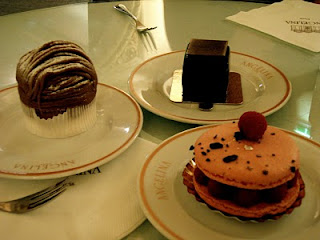We Should Aspire To The Taj Mahal's Embodiment of Love and Diversity
All of the tour books and blogs will tell you that the Taj Mahal lives up to its reputation. They'll assure you that, despite all of the attention and hype, experiencing the Taj firsthand actually does live up to these lofty expectations. When I was there, I agreed. But now that I'm back and have had some time to reflect, I realize what makes it so special:
The Taj Mahal was imagined out of love created by diversity.
Two weekends ago my mother and I went to see the blockbuster movie Hidden Figures. The film is about three women in the 1960s whose courage, perseverance, and unparalleled mathematical prowess helped to put a man on the moon. Even in the relatively liberal bubble of NASA headquarters, these three pioneers encountered both racism and sexism at every turn. Despite their superior skill, they were treated as inferior workers. Thankfully, these characters came at a pivotal moment in history, and the social and political forces of the time enabled them to chip away at these obstacles and eventually achieve their goals.
Shah Jahan, a Muslim ruler, did not limit the privilege of working on this monument to only Muslim artisans. Instead, he demanded and sought out the best--no matter from where they came. His chief architect wasn't a Mughal, like the Emperor himself, but a Persian. As we toured around the Taj Mahal, our guide kept pointing out the subtle differences in pattern that exemplified both Muslim and Hindu design and the beautiful stones that came from all over the near and far East. Seeking the best for his beloved, Shah Jahan's team selected craftsmen on the basis of skill rather than race or religion. More than 350 years later, we still don't seem to have this lesson down.
That's why, this weekend I walked with an estimated 400,000 men, women, and children in the Women's March in New York City. Centralized in Washington D.C. and replicated throughout the world, the collective march brought together millions of people for one of the largest inaugural protests in history. The Women's March included individuals across gender, race, religion, geography, and every other label that could be used to divide us. To me, it was the perfect demonstration that diversity matters, and when we build each other up we become stronger. How is it that we still don't all know that Love Trumps Hate, Black Lives Matter, Muslims are Not Terrorists, and Women Deserve Equal Rights?
If you want the best output, you have to have the best input. Racism in the workforce is an appalling social issue that should not be tolerated on humanitarian grounds... and it's also bad business. Sexism and Xenophobia are equally intolerable on a moral level... and they also keep our society from progressing. Why would you want to dim your brightest stars? If Emperor Shah Jahan had been as Xenophobic as President Donald Trump, we never would have been able to marvel at the beauty of the Taj Mahal.
The Taj Mahal is not a palace or a mosque; it is a mausoleum. Mughal emperor Shah Jahan commissioned this building in 1632 to house the tomb of his favorite wife, Mumtaz Mahal ("Chosen One of the Palace"). The name "Taj Mahal" means "Crown of the Palace" and is a derivation of Shah Jahan's beloved wife's name. One of the things that draws people to the Taj Mahal is this epic love story. History has no shortage of examples of Kings mistreating their Queens, regardless of the era or region. Female equality and marriage for love over pragmatism are two very recent social trends. Yet, Shah Jahan and Mumtaz Mahal were, purportedly, balanced partners who were very much in love. It is this love and equality that makes the Taj Mahal so special. Without it, the mausoleum would not have been so grand--or may not have been built at all.






Comments
Post a Comment